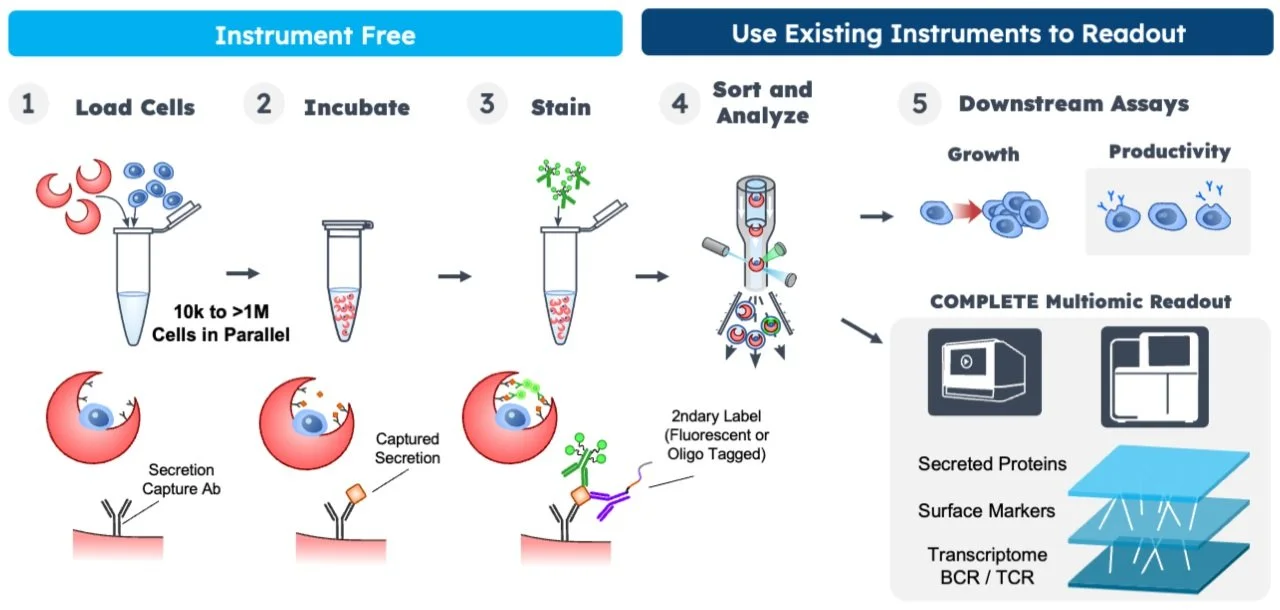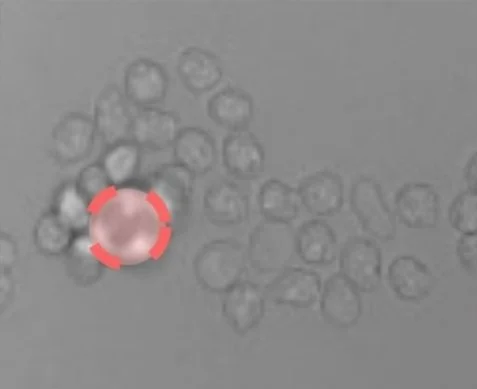
Nanovial Technology at a Glance
Massively Parallel
Analyze 100K - 1M cells at 100X lower costs
Sensitive Functional Assays
Capture and measure secreted molecules from individual cells
No New Equipment
Analyze and sort in high throughput using flow cytometers
Non-Destructive
Cells maintain high viability enabling further downstream applications
Nanovial Technology Explained
Why look at secretions at the single cell level?
What are Nanovials?
A typical Nanovial workflow
Real-world applications

Nanovials are nanoliter-sized particles that act as millions of suspendable wells for individual cells
Easily modifiable, they offer improved sensitivity for the detection of secreted molecules
Step-by-Step Nanovial Workflow
Instrument Free Steps
Step 1 - Load Cells
Nanovials are modified with cell capture and secretion capture moeities (i.e. antibodies) . Cells and Nanovials are mixed in a standard sample tube and allowed to bind.
Step 2 - Incubate
Cell-loaded Nanovials are incubated and secreted proteins are captured using antibodies or other affinity agents modified on the Nanovial surface (Similar to a well plate or bead based ELISA).
Step 3 - Stain
Captured secretions are stained with fluorescent detection antibodies or other detection proteins. Other fluorophores or cell stains can also be added at this step. Importantly, Nanovials retain both the secreted protein information and the cells themselves enabling downstream analysis.
Readout Using Existing Instruments
Step 4 - Sort and Analyze
Nanovials are engineered to be compatible with common flow cytometers and fluorescently activated cell sorters, enabling sensitive multi-parameter analysis and sorting of secreted protein information along with cell surface markers. Cells not only remain alive throughout this process, but have improved viability due to the cavity acting as a shelter for the cells.
Step 5 - Downstream Assays
Sorted cells remain viable enabling further downstream assays including growth, productivity, and genetic analysis. Downstream assays can be performed directly on the nanovials or cells can be released from the Nanovials using trypsinization.
Regrowth Post-Sort
Productivity
Sequencing














